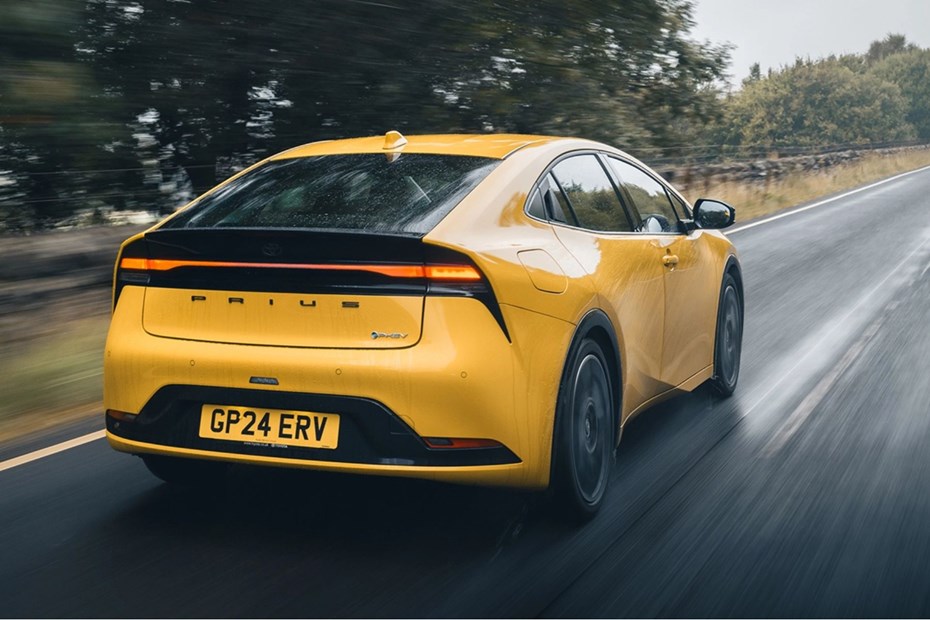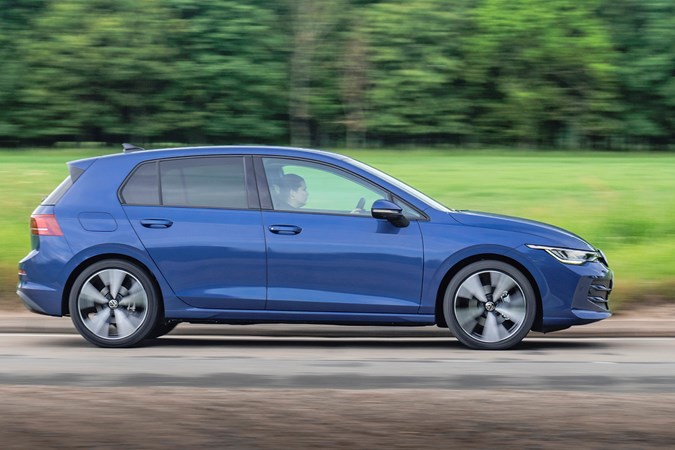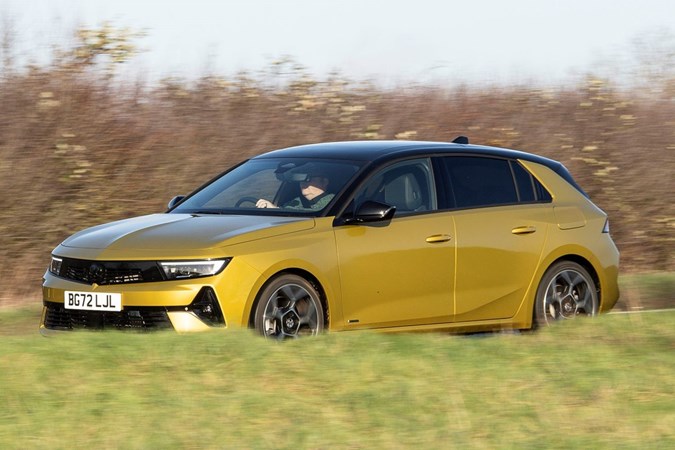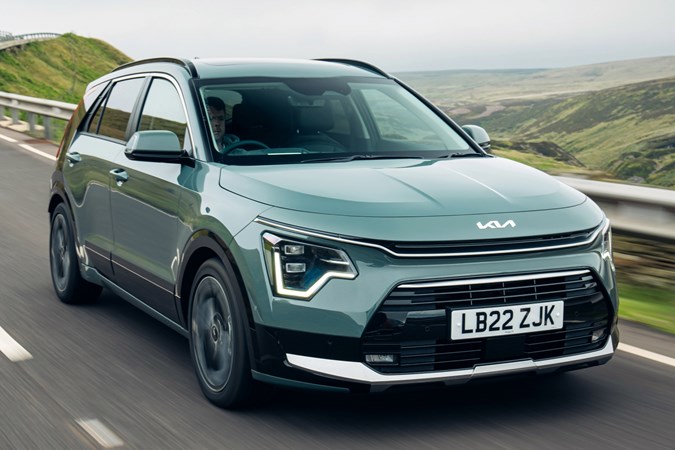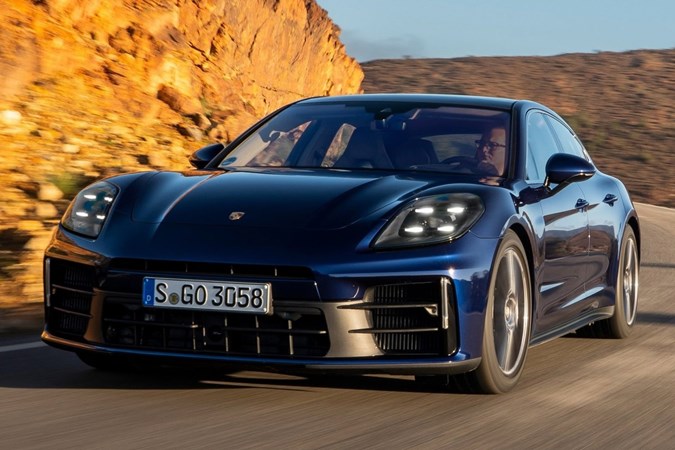First Year Rates for Vehicle Excise Duty are going up from April 2025. Now, only electric vehicles (EVs) will be eligible for the lowest £10 rate, so even if you’re buying a hybrid, you will be paying more tax. Vehicle Excise Duty is based on emissions, and the more carbon dioxide per kilometre (CO2 g/km) a car produces, the more it’ll pay in tax, broken down into bands. The new rates will be £10 for a zero emission vehicle, £110 for a car that emits between 1-50 g/km of CO2, and £130 for cars that emit 51-75 g/km of CO2.
The biggest cost increase will be for a car that produces over 76 g/km of CO2. Prices are doubling for First Year Rates. To put that into perspective, a tiny new Suzuki Swift (99 g/km of CO2) will have its First Year Rate doubled, just like a behemoth Mercedes-Benz G 63 AMG (369 g/km CO2). While the tax you’ll pay on these cars will be different (you can view the full First Year Rates below), it points to an increasing hostility to petrol and diesel cars.
There’s no way of getting around it. Buy a new car with any engine from April 2025, and you’ll pay at least £110 on First Year VED. The £10 First Year Rate will only apply to EVs, so even the greenest plug-in hybrids will cost a lot more than before. For those not ready or wanting to commit to a full EV, we’re breaking down the best low-emission new cars that won’t attract the doubled tax rate.
The best new cars that produce less than 76 g/km of CO2
£110 First Year Rate
It gets better too. The latest Volkswagen Golf fixed a lot of what made the last one such a disappointment. The infotainment system is a lot better than before, and the build quality is better, too. As the de facto hatchback of choice, it’ll perform family duties with ease, and it’s not half-bad to drive either.
To find out more, read our full Volkswagen Golf review
Pros
- PHEV is one of the best around
- Infotainment screen is so much better now
- Build quality is top-notch
Cons
- PHEV steals some boot space
- Other hatchbacks offer better handling
£110 First Year Rate
Some similar cars will go further on EV power alone, but the 330e is more desirable. It’s an excellent car to drive, fast and fun when needed, before settling down into an efficient long-distance cruiser. It’s simply an unmissable consideration for anyone in the market for a new car.
To find out more, read our full BMW 330e review
Pros
- Balances performance and economy perfectly
- Enjoyable to drive
- Nice interior
Cons
- M Sport ride is crashy
- PHEV nicks boot space
£110 First Year Rate
It looks a lot nicer than before, and the interior is slicker too. It’s gone from frugal and unkillable minicab fodder to a desirable family car in one fell swoop. Expect that effortless economy and unshakeable reliability to continue in this generation too. It even squeaks in under the £40,000 luxury car surcharge too.
To find out more, read our full Toyota Prius review
Pros
- Effortlessly refined, smooth performance
- Excellent efficiency
- Stands out from the crowd
Cons
- Interior lacks design flair
- Small model range
£110 First Year Rate
The second reason we're choosing it is to highlight the price difference between a car that falls below the threshold and one that doesn't. All PHEV Astras will have to pay £110 First Year VED. An equivalent petrol-only example will cost you an eye-watering £440.
To find out more, read our full Vauxhall Astra review
Pros
- Smart-looking car
- Good level of standard equipment
- Solid build quality throughout
Cons
- Battery robs boot space
- PHEV loses a step with handling
£110 First Year Rate
Like most PHEVs, boot space is reduced against the standard hybrid model, down to 348 litres. But with a cavernous interior and clever storage solutions, it'll work exceptionally well as a family car. Then there's the 18 g/km CO2, which keeps First Year Rates in the lowest band for non-EVs.
To find out more, read our full Kia Niro review
Pros
- Efficient hybrid options
- Good interior space and quality
- Long warranty
Cons
- Handling isn't the best in its class
- Hard ride at low speeds
£110 First Year Rate
Thanks to a 25.9 kWh battery and up to 57 miles of pure electric driving, a Panamera Hybrid registers at just 39g/km of CO2. That’s correct, a 680 hp sports saloon will cost you just £110 in showroom tax. Need some extra room? Select a plug-in Cayenne and you’ll again fall below the 76 g/km threshold.
To find out more, read our Porsche Panamera review
Pros
- Agile for big car
- End-end interior
- Excellent plug-in hybrid system
Cons
- Only comes with four seats as standard
- Expensive options
£110 First Year Rate
Thanks to the 19 kWh battery pack, it has a 44.1-mile (combined) EV range, and produces just 30 g/km of CO2. An imminent facelift will also help breathe some life into the ageing platform.
To find out more, read our Volvo XC90 review
Pros
- Safety in spades
- Well-proven PHEV powertrain
- Seven seats
Cons
- Getting a bit old now
- Can feel quite big and heavy
Frequently asked questions
What are the First Year Rates?
The First Year Rates of VED (known as the showroom tax) are the rates you’ll pay on a brand-new car for the first year. These rates are different to typical VEDs to incentivise the adoption of low-emission vehicles. Previously, a car that emitted between 51-75 g/km of CO2 would pay £30, 1-51 would pay a tenner and zero emissions cars were tax-free.
Below are the new rates from 2025. Note that not even zero-emission cars have a free ride now.
| CO2 (g/km) | Diesel cars (TC49) that meet RDE2 standard and petrol cars (TC48) | All other diesel cars (TC49) | Alternative fuel cars (TC59) |
| 0 | £10 | £10 | £10 |
| 1- 50 | £110 | £110 | £110 |
| 51 – 75 | £130 | £130 | £130 |
| 76 – 90 | £270 | £350 | £250 |
| 91 – 100 | £350 | £390 | £330 |
| 101 – 110 | £390 | £440 | £370 |
| 111 – 130 | £440 | £540 | £420 |
| 131 – 150 | £540 | £1,360 | £520 |
| 151 – 170 | £1,360 | £2,190 | £1,340 |
| 171 – 190 | £2,190 | £3,300 | £2,170 |
| 191 – 255 | £3,300 | £4,680 | £3,280 |
| 226 – 255 | £4,680 | £5,490 | £4,660 |
| Over 255 | £5,490 | £5,490 | £5,490 |
What is a plug-in hybrid?
Our recommendations here exclusively feature plug-in hybrids. Also known as PHEVs, these cars balance an EV and a conventional petrol or diesel car. This means they’ll use a substantial battery and motor partnered with an engine.
You’ll notice that no small car makes it onto the list. These cars aren’t prime candidates for PHEVs – the packaging required won’t work on anything too small, like a city car. Read a review of a PHEV version of a car and you’ll usually spot a smaller boot capacity, that’s where the battery goes.
Are there any non-electrified cars that fit into these tax bands?
Even the greenest of petrol motors will be liable to pay double VED from April. The smallest of petrol cars we could find, the likes of the Hyundai i10 and Vauxhall Corsa simply cannot make it below that crucial threshold.
Just so you know, we may receive a commission or other compensation from the links on this website - read why you should trust us.


